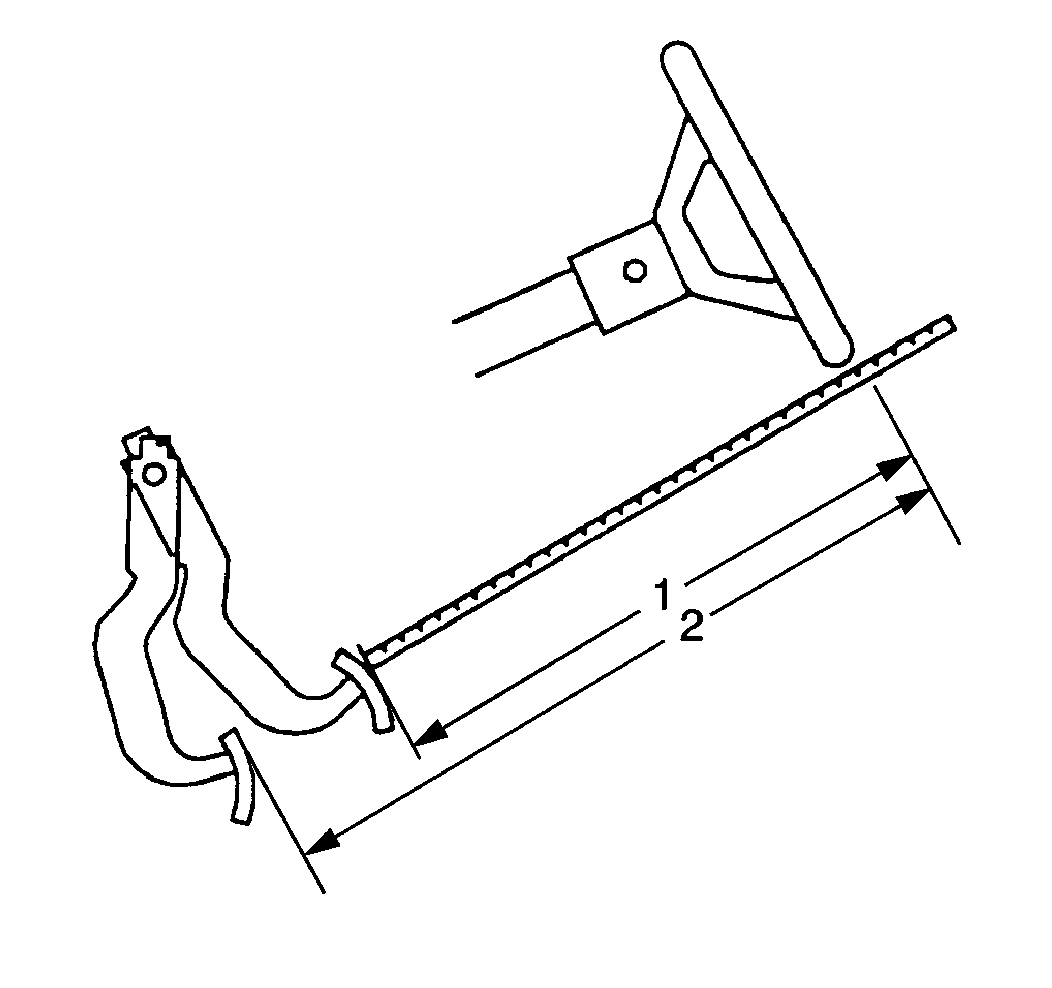For 1990-2009 cars only
Tools Required
J 28662 Brake Pedal Effort Gauge
Measure the brakes frequently for pedal travel. Pedal travel is the distance the pedal moves toward the floor from a fully released position. Air in the hydraulic system may be the cause of most low brake pedal problems. Bleed the system until all the air is purged from the system. Refer to Hydraulic Brake System Bleeding .
The following conditions may be other less frequent causes of excessive pedal travel:
| • | Excessively worn linings |
| • | Hydraulic system leakage |
Measure the brake pedal travel. Use the following procedure:
- Turn the engine OFF.
- Pump the brake pedal at least ten times.
- Install the J 28662 into the brake pedal.
- Hook the end of a tape measure over the top edge of the brake pedal.
- Measure the distance (1) from the top edge of the brake pedal to the rim of the steering wheel with the brake released.
- Press the brake pedal with approximately 445 N (100 lbs) of force while the brakes are cold.
- Measure the distance (2) from the top edge of the brake pedal to the rim of the steering wheel. Subtracting measurement (2) from measurement (1), the pedal travel should not exceed 60-65 mm (2.3-2.6 in) for vehicles with a vacuum booster and 85-90 mm (3.3-3.6 in) for vehicles with a hydraulic booster.

